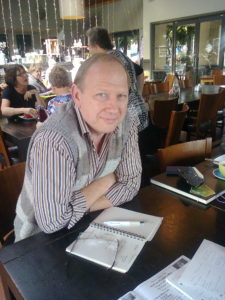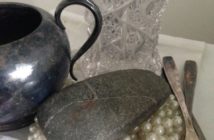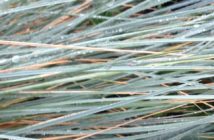The centenary of the First World War has seen a proliferation of new books being published on and around the topic. I have been very fortunate to be able to review three great additions to our knowledge by some very talented New Zealand writers. One is specifically on the First World War, while the others take a much broader look at all the conflicts in which New Zealand has been involved.
The three books are, First Day of the Somme by Andrew MacDonald, To the Memory by Jock Phillips and The Penguin Book of New Zealand War Writing edited by Harry Ricketts and Gavin McLean.
The Penguin Book of New Zealand War Writing has the broadest sweep, covering conflicts that involved New Zealand as far back as the time of Captain Cook right up to modern times. I particularly like that the content includes both factual and fictional writing. Factual accounts from those who witnessed the events are set alongside many contributions from our finest writers who have imagined or reinterpreted the events in our history. There are some excellent stories in here that will both shock and delight, and in particular some that open an understanding of the traumas suffered by those who returned from war like nothing I have ever read.
To the Memory by Jock Phillips is a quite different approach, being a look at our war memorials across the country and across all our different wars. It is much more of a picture book, but it also has a superb narrative about the approach we have taken to honour those who made the ultimate sacrifice for this country. The scope of Jock Phillips book runs from the New Zealand Wars to the present day and charts the different responses. While it took 50 years to begin to erect memorials for the New Zealand Wars, it took only five years to build those for the South African Wars. While the First World War was commemorated with statues, cenotaphs and obelisks, the Second War had a quite different response with memorial halls, libraries or even a museum. The arguments about the appropriate response that sprang up between central and local government and the local people are a fascinating part of our social history. In the depression era after the First World War, the cost of memorials was an issue and in many cases we imported them directly from marble sculptors in Italy rather than the more expensive commission of a local artist. Where these commissions did happen the result were fine sculptures such as figures in Devonport and Christchurch.
This book is well-timed, as the centenary celebrations have led to the restoration of many memorials around the country and as Phillips suggests, we are now more interested than ever in the exploits of those who went before us. He recalls an ANZAC Day service in Auckland in the mid-1980s where only a few hundred attended and compares it to 2015 when more than 50,000 were present.
And my final selection is an excellent reassessment called First Day of the Somme by Andrew MacDonald. The 1st July 1916 remains the worst day in British Military history, with 19,240 killed and over 35,000 wounded on that day alone. The book looks deeply at the characters involved on both the British and German sides and assesses their successes and failures. It then describes the fighting all the way along the front line, delving deeply into the specific battles and advances, the failures and the small successes. The Somme campaign would last until the middle of November, with Kiwi troops not heavily involved on the first day but soon playing an important role in the gradual push forwards. For an account of the Kiwi soldiers on the Somme, MacDonald has written an excellent volume called On My Way to the Somme.
Between the 1st July and the middle of November 1.28 million officers and men were killed or wounded on both sides. To put that in perspective, that is the equivalent of killing or wounding the whole population of Wellington, Christchurch, Hamilton and Tauranga. Such a huge loss of life is hard to imagine.
And where did the blame lie for all that carnage? A combination of factors; leaders out of touch with events, poor artillery impact in many places and a failure to understand just how well the Germans had dug themselves in, so that even after several days of bombardment they emerged from deep underground and were able to mow down the advancing troops in their thousands with machine gun fire. Continuous firing left guns too hot to touch and by the close of the day some were surrounded by more than 20,000 empty cartridge shells. Hundreds of guns and literally millions of bullets on one day alone.
Three very different but highly recommended books to read now as we look back to the sacrifices that our forefathers made in conflicts around the world.
 Marcus Hobson is the ARTbop Literary Editor, regular book reviewer, writer, and the Secretary of the Tauranga Writers group Marcus has been, and continues to be, lots of things. An aspiring author of both novels and reviews, he has always said he wants to be a writer and 40 years later is making that come true. He has in the past done such varied things as study ancient and mediaeval history at Uni in London, worked as an archaeologist, as an economist in central and southern Africa, and as truck driver in a quarry. About two years ago he relocated to the beautiful Bay from a finance job in Auckland. He is a lover of art, the written word and a full-time fanatical book collector, with over 3,000 volumes on his shelves. He lives close to Katikati with his wife and sometimes their three daughters, two cats, a library and the odd chicken. Marcus is currently working on a “factional” work about World War One.
Marcus Hobson is the ARTbop Literary Editor, regular book reviewer, writer, and the Secretary of the Tauranga Writers group Marcus has been, and continues to be, lots of things. An aspiring author of both novels and reviews, he has always said he wants to be a writer and 40 years later is making that come true. He has in the past done such varied things as study ancient and mediaeval history at Uni in London, worked as an archaeologist, as an economist in central and southern Africa, and as truck driver in a quarry. About two years ago he relocated to the beautiful Bay from a finance job in Auckland. He is a lover of art, the written word and a full-time fanatical book collector, with over 3,000 volumes on his shelves. He lives close to Katikati with his wife and sometimes their three daughters, two cats, a library and the odd chicken. Marcus is currently working on a “factional” work about World War One.
If you would like to contribute your original book reviews to ARTbop WORDS please forward them to info@artbop.co.nz for the attention of the Literary Editor Marcus Hobson. We prefer the work is emailed in docx format We appreciate one or two jpg images (not enormous ones as they become an uploading issue for ARTbop)




